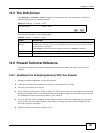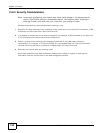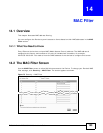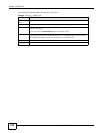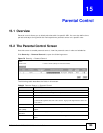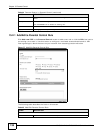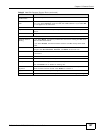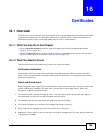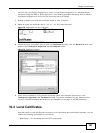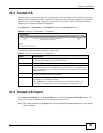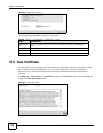
FMG3024-D10A / FMG3025-D10A Series User’s Guide 159
CHAPTER 16
Certificates
16.1 Overview
The Device can use certificates (also called digital IDs) to authenticate users. Certificates are based
on public-private key pairs. A certificate contains the certificate owner’s identity and public key.
Certificates provide a way to exchange public keys for use in authentication.
16.1.1 What You Can Do in this Chapter
•Use the Local Certificates screen to view and import the Device’s CA-signed certificates
(Section 16.2 on page 161).
•Use the Trusted CA screen to save the certificates of trusted CAs to the Device. You can also
export the certificates to a computer (Section 16.3 on page 163).
16.1.2 What You Need to Know
The following terms and concepts may help as you read this chapter.
Certification Authorities
A Certification Authority (CA) issues certificates and guarantees the identity of each certificate
owner. There are commercial certification authorities like CyberTrust or VeriSign and government
certification authorities.
Public and Private Keys
When using public-key cryptology for authentication, each host has two keys. One key is public and
can be made openly available; the other key is private and must be kept secure. Public-key
encryption in general works as follows.
1 Tim wants to send a private message to Jenny. Tim generates a public-private key pair. What is
encrypted with one key can only be decrypted using the other.
2 Tim keeps the private key and makes the public key openly available.
3 Tim uses his private key to encrypt the message and sends it to Jenny.
4 Jenny receives the message and uses Tim’s public key to decrypt it.
5 Additionally, Jenny uses her own private key to encrypt a message and Tim uses Jenny’s public key
to decrypt the message.



